Butlers' Photographs from the 1880s / 90s
These photographs are taken from pages of a photo album believed to have belonged to the Butler family.
The album was initially shared with us by Nigel Addison, it has been cut up, but fortunately most of it has been kept together and we now have access to the originals. The photographs are stuck to card, which formed the pages of the original album; most pieces have photographs on each side.
William Butler was manager of the Tar Works at Crews Hole from its very early days (it was established in 1843). From 1863 he, and later his family's company, owned the works along with another Tar Works at Gloucester. The family lived at Summerhill House on the Bristol to Bath road at the top of Troopers Hill.
The album contains family photos, some tourist type photos (eg of the Rivers Severn & Thames) but also photos of Butlers' Works; it was this mixture that made it stand out as not being a typical Victorian family album.
While neither the album, nor the photographs, are dated and there are limited written notes, we believe that William Butler is in two of the photographs (see below), so that photo must predate his death in 1900; it is also possible that at least one of the photographs shows his wife, Ann who died in 1886.
In 1954, Wm Butler & Co. (Bristol) Ltd published a book with the history of the company; it included aerial views of their works at Crews Hole, Silverthorne Lane & Gloucester. Some of the buildings in the shots below can be identified from these views. The book is now out of copyright and can been seen here.
The book tells us that one of William Butler's sons, Thomas, was interested in photography, so perhaps it was his album?
Crews Hole Tar Works
Two photos show the Crews Hole Works which until the 1900s occupied a relatively small section of the site by the river compared to its final extent. In the 1890s it only covered the area from opposite Troopers Hill Road, to opposite Nibletts Hill.
You can see that the area west of the works (nearest to the camera in both shots) appears to be being used as a tip. A plan from an 1886 lease shows the area as 'cinder yards' and this also matches what is shown on the 1880s OS map. The Phoenix Chemical Works may have been in existence by the time of this photo, but would have been out of shot. To the east (further from the camera) you can see what were then school buildings, these were later incorporated into the works and used as laboratories, they can be seen surrounded by vessels and pipes in 1953 here. This school closed in around 1905, when Air Balloon School was built to replace it.
In this first photo, taken from the St Anne's side of the river, there is a white building behind the works to the right of the boat mast. This is the original Bull Inn and was situated where the pub car park is now. The pub was rebuilt in around 1904 on its present site.
The boat in the foreground presumably belonged to Butlers. It looks to be a steam barge.

The second photo (below) is taken from Troopers Hill; Stones Rank cottages are clearly visible in the foreground and the White House is at the left of the photo.
The square chimney at the bottom of the Hill is also visible, this was the site of a coal mine (closed by this date). Note that the lower part of the chimney is hidden by the Hill, so we must be looking at the second and now missing third top section of the chimney.
Behind the chimney is the Crews Hole Free Methodist chapel
which opened in 1853, with strong support from William Butler. This has now been converted for residential use.
Across the river are fields and trees in the area that is now St Anne's. Beyond the school we are looking at Conham.
In the works themselves can be seen a row of 5 or 6 domed structures with pipes coming out of the top. These were the original pot stills for distilling tar into its separate components, such as creosote, which had different boiling points. The tar was heated and the components taken in turn as it heated. At the end of the process the still had to be allowed to cool before being recharged The stills were replaced in the 1900s by a continuous distilliation process that removed the need to heat and allow to cool, however, three of these stills were not demolished until the 1960s.
Click on the 2022 photo to to see how the area shown in the photo looks today.
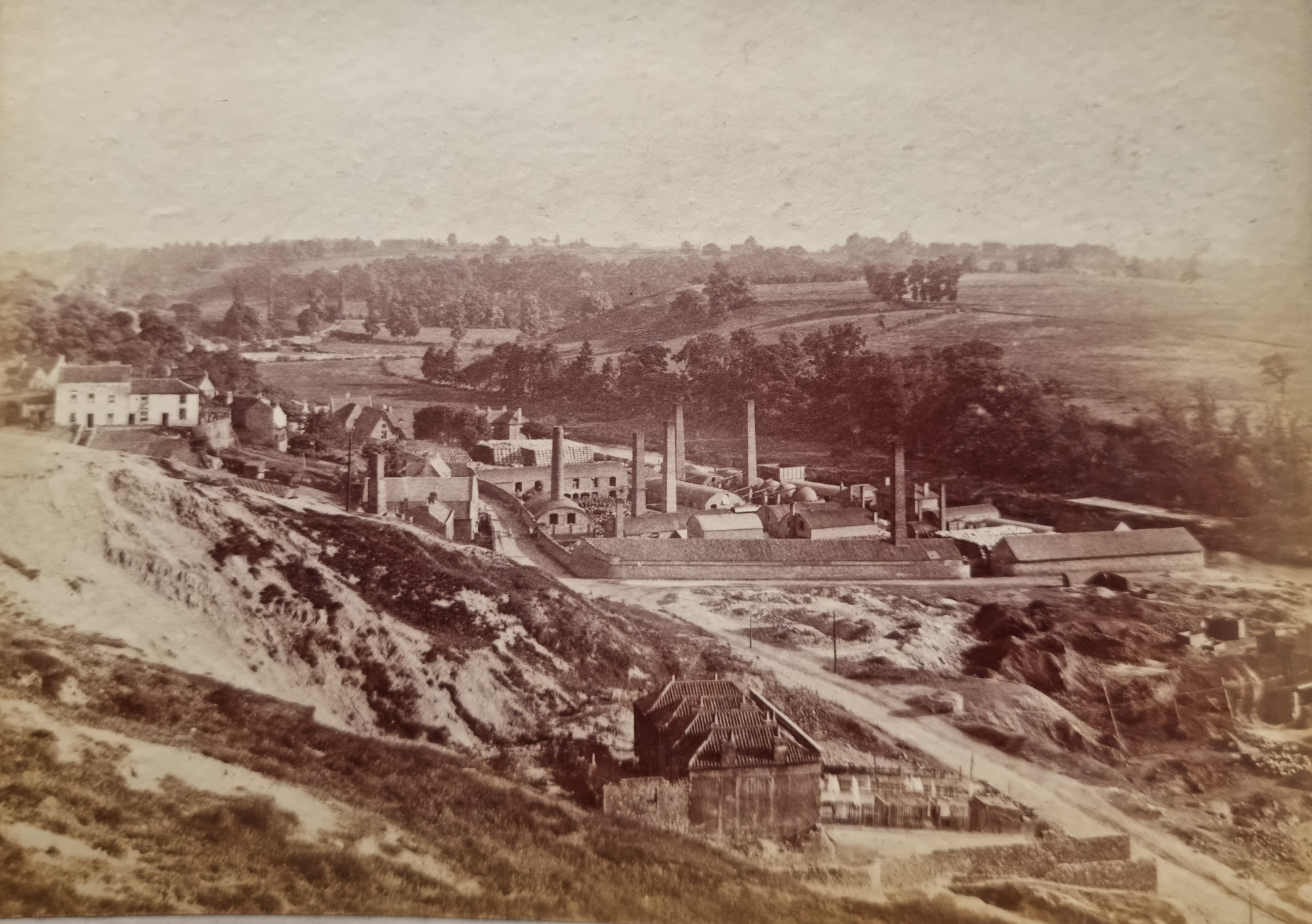
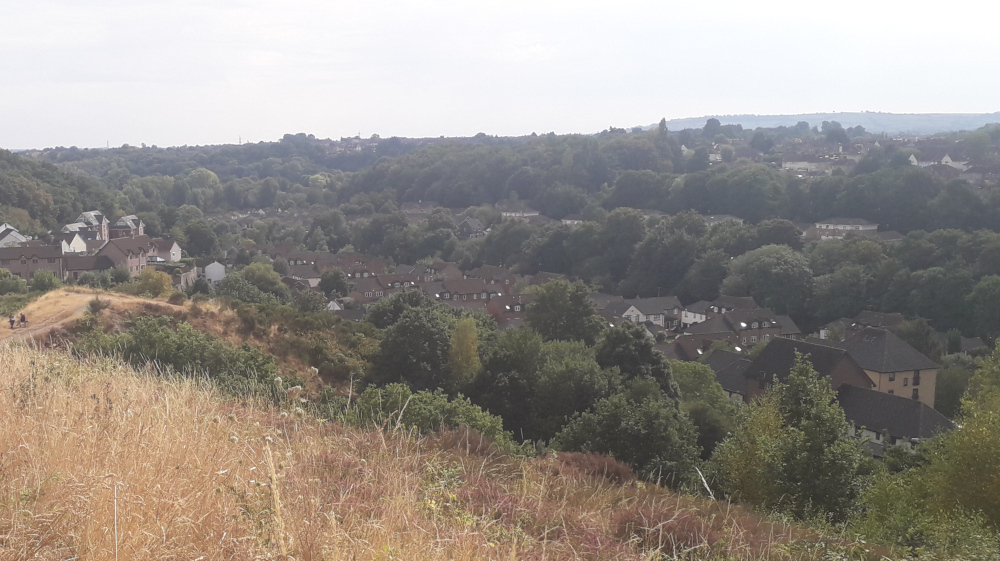
Gloucester Tar Works
Butlers' Works at Gloucester were beside the River Severn at the Upper Parting just over two miles north of the City. Gloucestershire Society for Industrial Archaeology had an article about these works in their 2012 Journal. Some of the buildings in these photographs can be indentified as being those in the aerial view in the 1953 book, which is also included in the above article.
William Butler had set up these works in 1860 and moved to Gloucester having been manager of the Crews Hole Works. In 1863 he purhased the site in Crews Hole and moved back to Bristol, both sites were then run by the same company.
In the second photograph pot stills can be seen of the same design as those at Crews Hole.
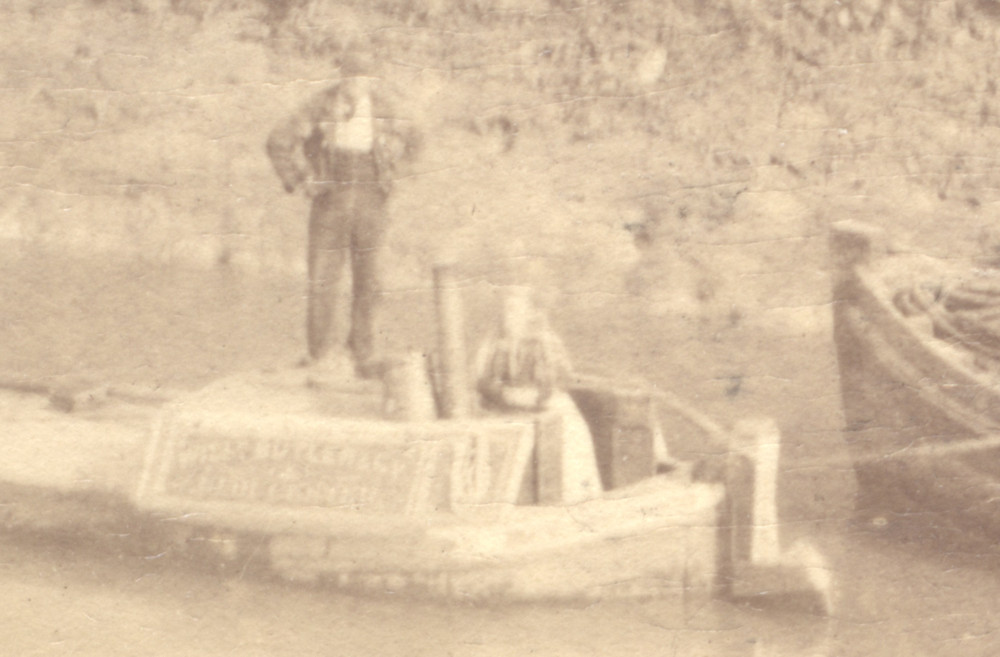 Both photographs show a barge loaded with barrels and a narrowboat. The narrowboat (which would have had a large tank for tar under its decks) can be seen to have been owned by William Butler & Co. (see close up). Butlers made extensive use of water transport for collecting crude tar from the Gas Works where it was produced as a by-product of the process of producing town gas from coal. Finished products were also distributed by water transport, usually in barrels.
Both photographs show a barge loaded with barrels and a narrowboat. The narrowboat (which would have had a large tank for tar under its decks) can be seen to have been owned by William Butler & Co. (see close up). Butlers made extensive use of water transport for collecting crude tar from the Gas Works where it was produced as a by-product of the process of producing town gas from coal. Finished products were also distributed by water transport, usually in barrels.
You can see that both photos are posed, with the boat crews looking at the camera having stopped work. These weren't photos taken by a passing tourist.
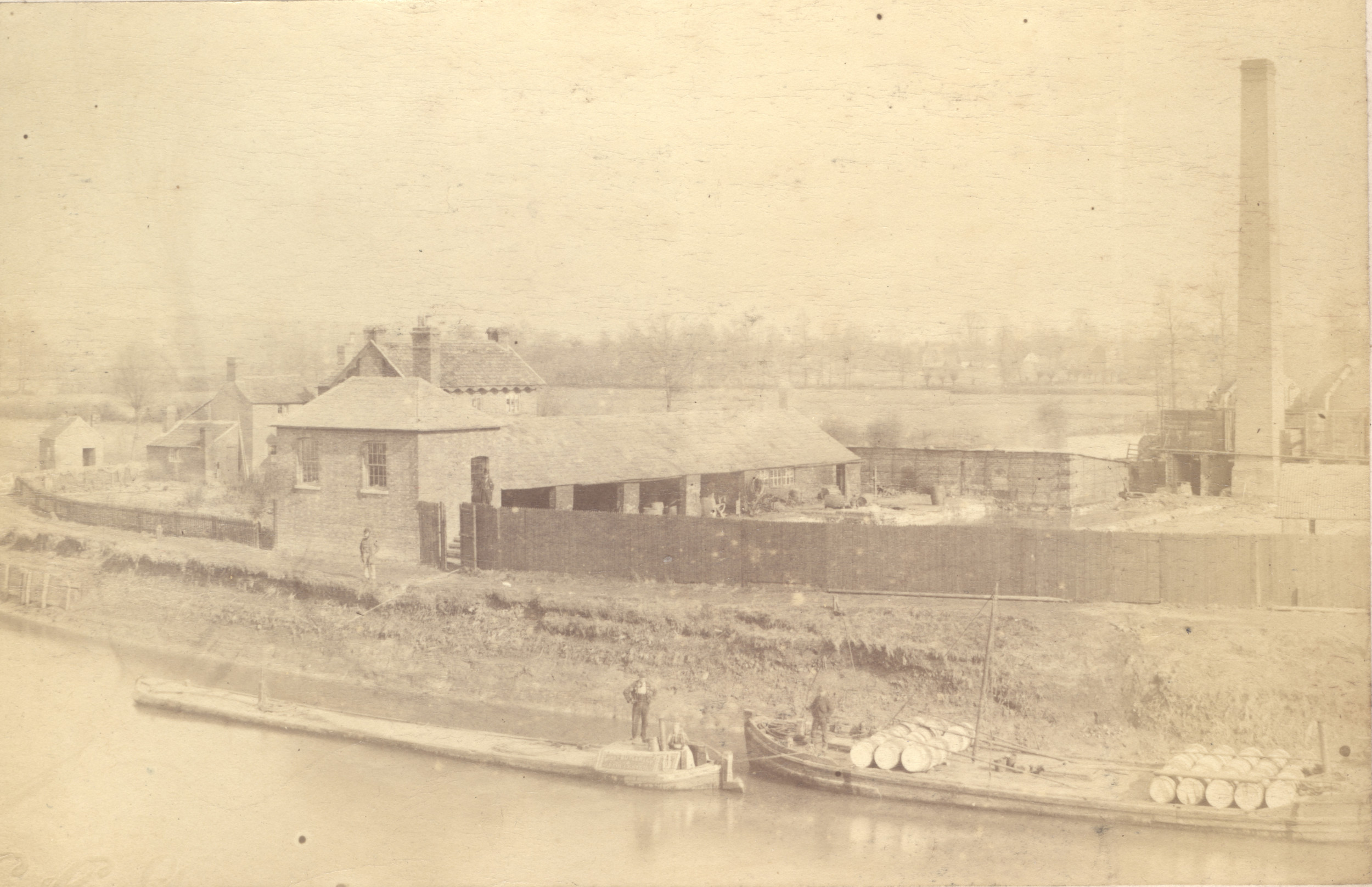
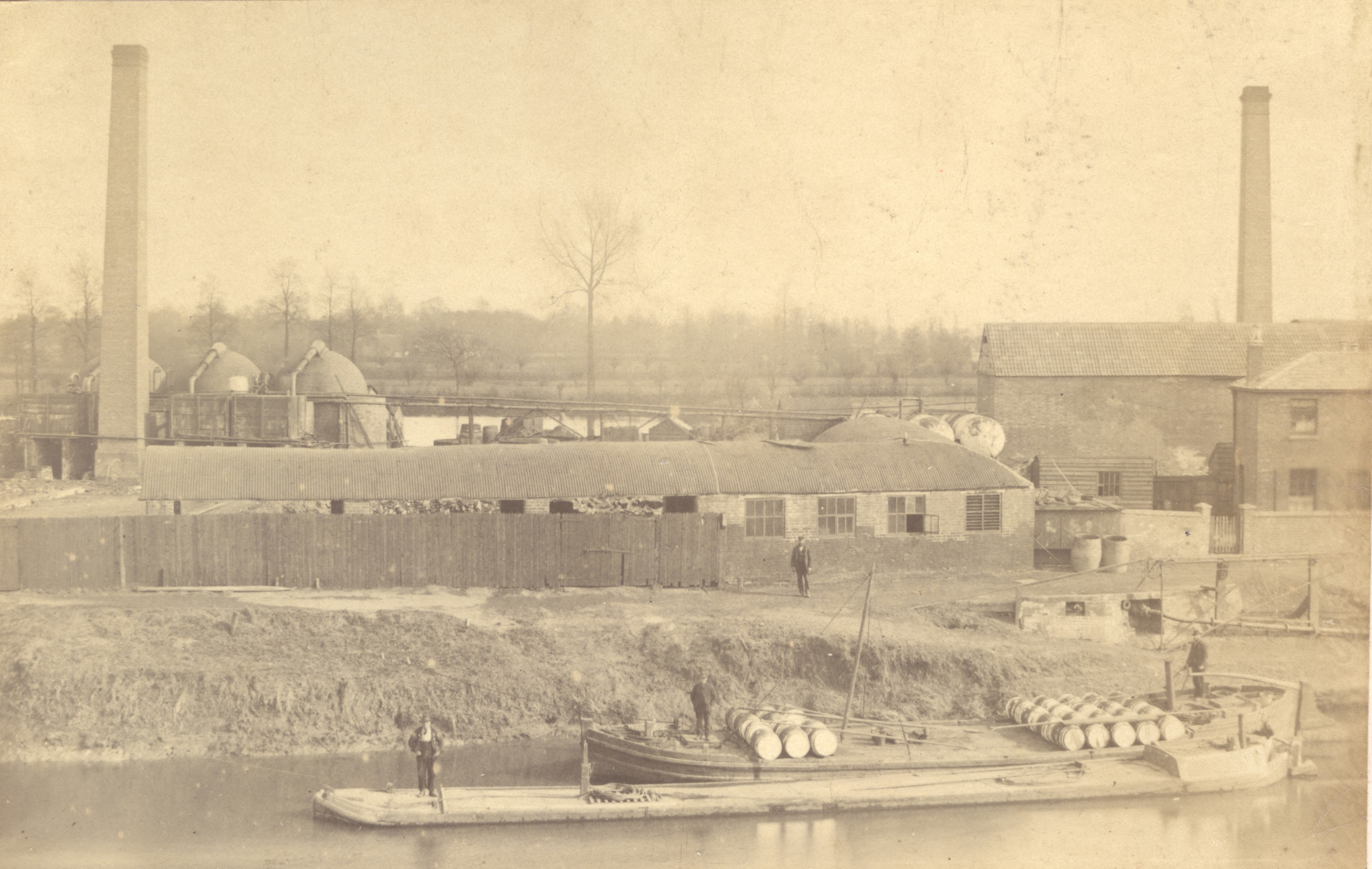
Head Office, Silverthorne Lane, Bristol
Butlers' Head Office in Silverthorne Lane, St Phillip's, Bristol features in two photographs. The Siverthorne Lane site was leased to William Butler by Roberts & Daines in 1871 and it became their rail-head at Bristol and a storage depot as well as Head Offices of the Company.
Barges running from Crews Hole brought barrels or tanks full of finished products for onward transport by rail.
This building can be indentified in the aerial view in the 1953 book (also in the article linked above). The two stone pillars at the entrance still exist, although they were relocated when the entrance was widened at some point in the past.


The Butler Family
There is no information on who is in this family group, but given the context of the rest of the album it is likely to be members of the Butler family.
The older man towards the centre with the white beard is most likely William Butler.
This and other family photographs from the album are featured on a separate page, see link below.

The Butler Grave
This is the grave of Ann Butler, William's wife. Ann died in 1886.
The monument is the same as that which still stands in Avonview Cemetry overlooking the site of the Crews Hole Works. As well as Ann, it is now the grave of William Butler himself, their son Joseph Beaumont and their youngest daughter Ada Boam.
In this photograph there is clearly a blank panel to the left of Ann's inscription, that is now inscribed to William and that section of the monument has been turned 90 degrees, so that William's inscription faces the path. The railings around the grave have been removed; as have the surrounding grave stones.
Click on the 2022 photo to compare.
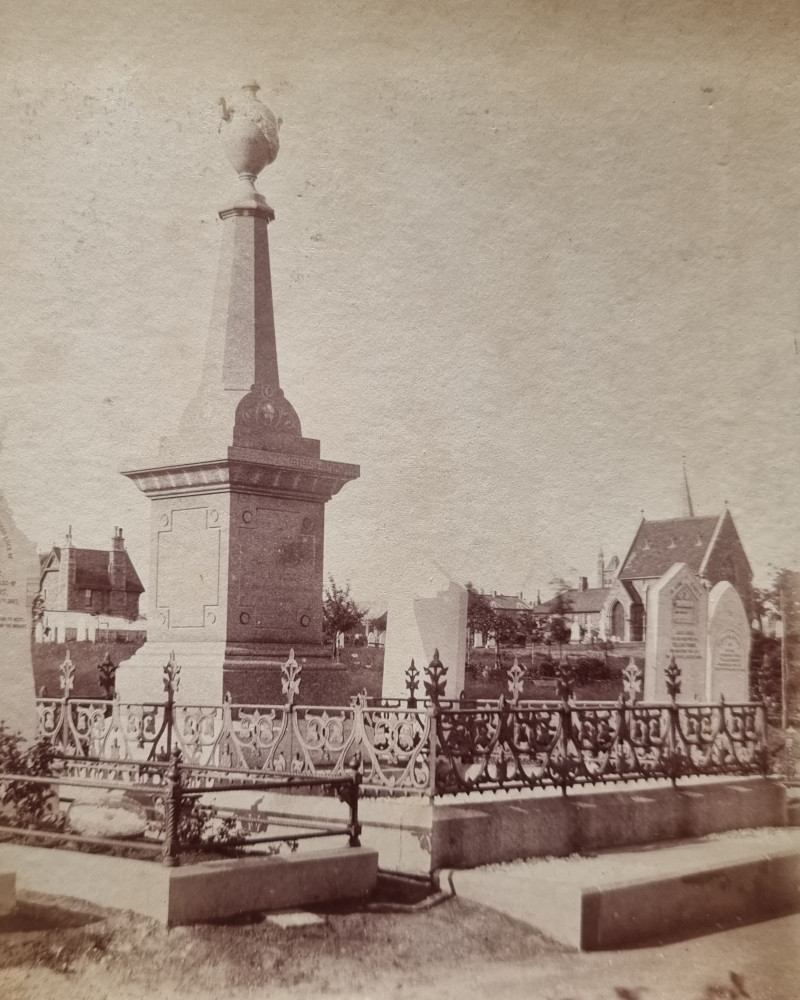
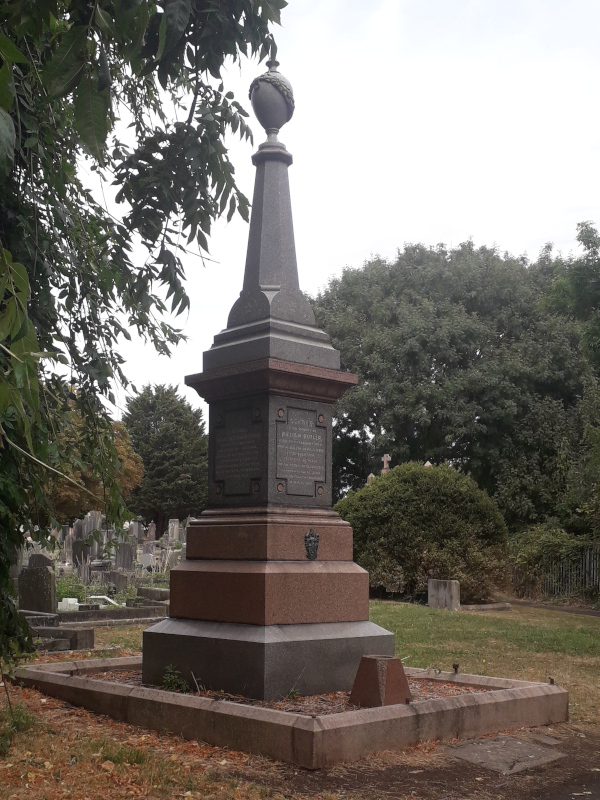
Redland Grove Methodist Chapel
Butlers' book of 1953 notes that William Butler was "very closely associated with the Methodist Church, being a teacher, a sick visitor and, later, a Preacher" so it was not a surprise to find photographs of a Methodist Chapel in the album. William Butler was a member of the United Methodist Free Church (U.M.F.C.) their chapel in Crews Hole opposite the Tar Works (see top photographs) opened in 1853, when William Butler was manager of the Works. There are reports of him walking down Troopers Hill Road to worship there.
The chapel shown in these photographs is Redland Grove Methodist Chapel (or Church) on Fairview Drive - now converted into offices. It opened in 1876.
The link between William Butler and the chapel, part of the United Methodist Free Church (U.M.F.C.) is confirmed in this Bristol and Gloucestershire Archaeological Society paper focusing on Joseph Perry Distin which describes William Butler as a friend of Distin.
"He 'possessed great force of character, shrewdness and large business capacity. He was also eminently a religious man'. He was first chairman of the Board of Directors of the Bristol Tramways company for 26 years, and Liberal councillor for St. Philip's South 1887-90. He was a generous benefactor to the U.M.F.C., and was particularly involved with Redland Grove chapel"
In their book 'The Butlers & the Coal-Tar Distillery at Crew's Hole' (ALHA Books), Brian Vincent and Raymond Holland mention that William Butler's funeral service in 1900 was 'led by an old family friend, Rev Dr Brook, the pastor at Redland Grove Free Methodist Chapel'.
William Butler's involvement in the Methodist Church in Bristol is also recorded by George Eayers in his 1911 book 'Wesley and Kingswood and its Free Churches', he says that William Butler "joined with the venerable Rev Henry Cook and others in building Redland Grove Church, Clifton, in which neighbourhood he resided during the last twenty-five years of his long life". William Butler's move to Clifton from St George was indeed 25 years before his death, he purchased his house there, Clifton Grove, on 4th March 1875. The house was about 30 minutes walk from the chapel which was opened a year after his move.
On 27th July 1887, just over a year after the death of his first wife Ann, William Butler married his second wife, Elizabeth Shellard, at Redland Grove Chapel.
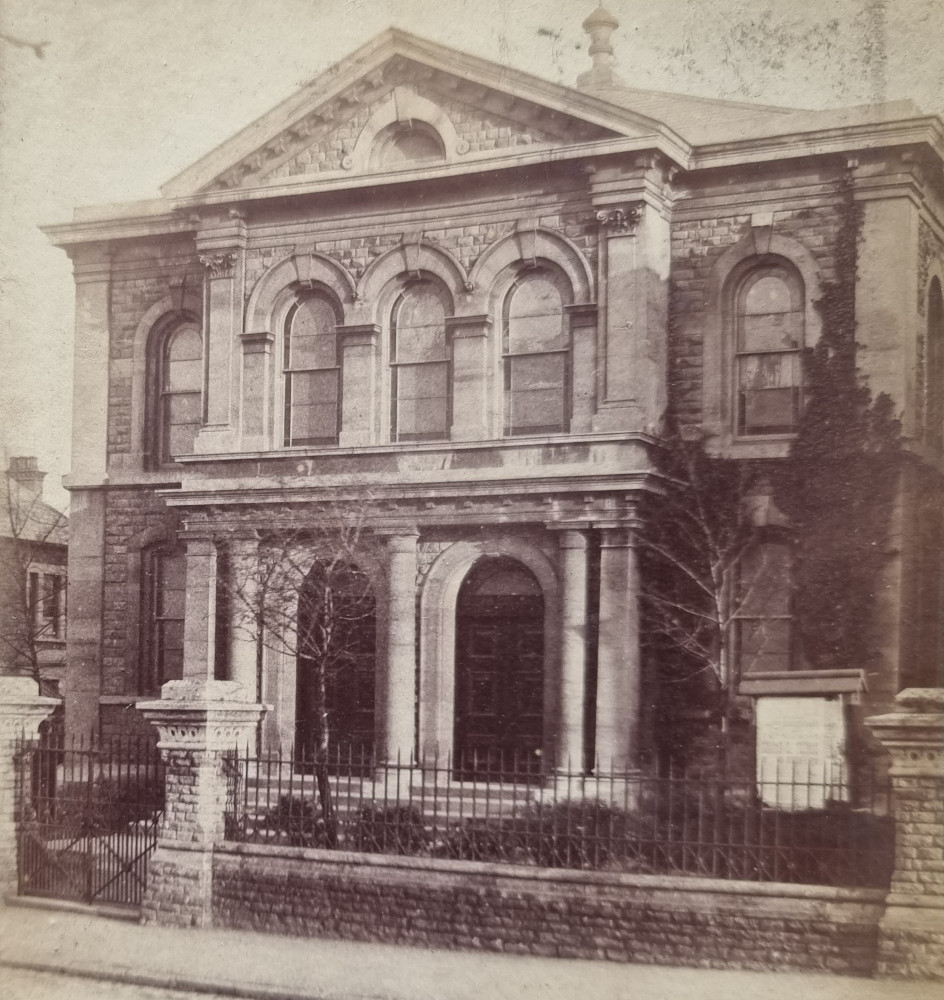
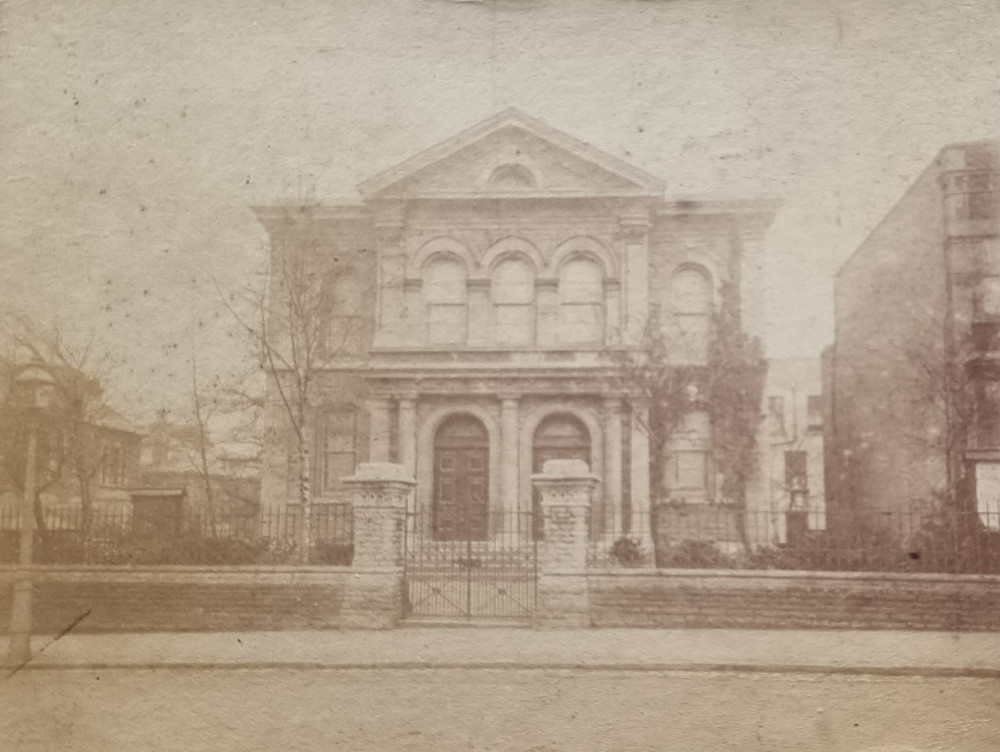
Working Horses
In the 1890s, horses were vitally important to any business for transportng goods. William Butler was also Chairman of the Bristol Tramways Company and all trams were horse drawn until 1895. The Butlers also of course used carts or carriages drawn by horses themselves.
The horses shown here could belong to the Tar company or the Butler family.
The second photo is taken outside the Silverthorne Road office (see above).
The arch in the first photograph is likely to be one of the railway arches on the opposite side of Silverthorne Lane from Butlers' Works. These were also used by Butlers. The arches are now brick faced; so at first sight don't seem to match, but closer inspection shows this to be more modern brick, so it is possible that the stone was replaced when the arches were refurbished at some point. Thank you to David Martyn for this suggestion. Please contact us if you have more information.
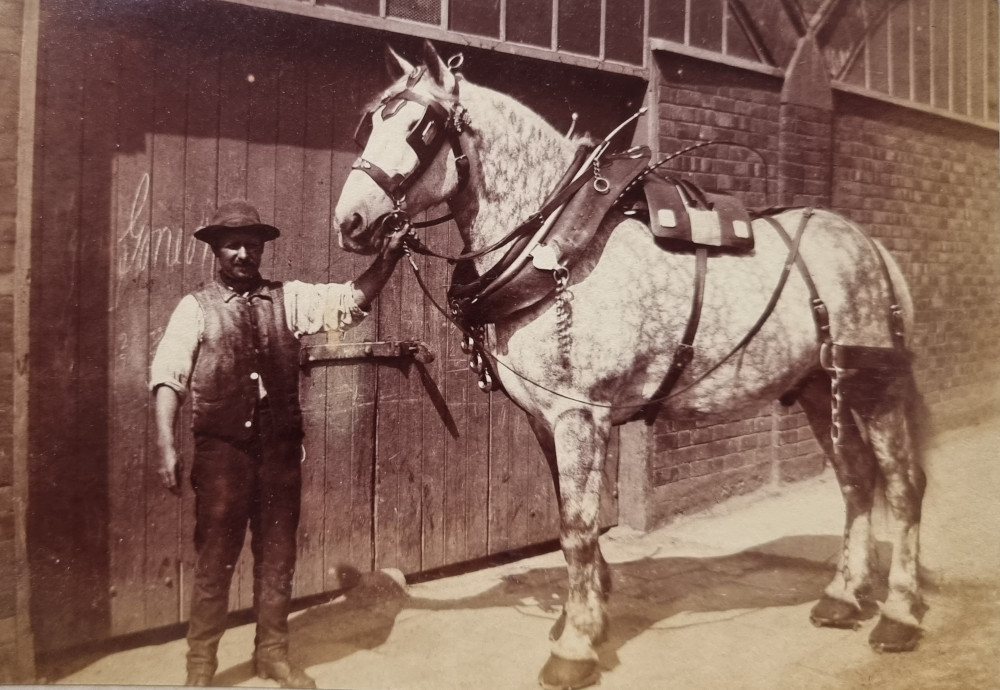
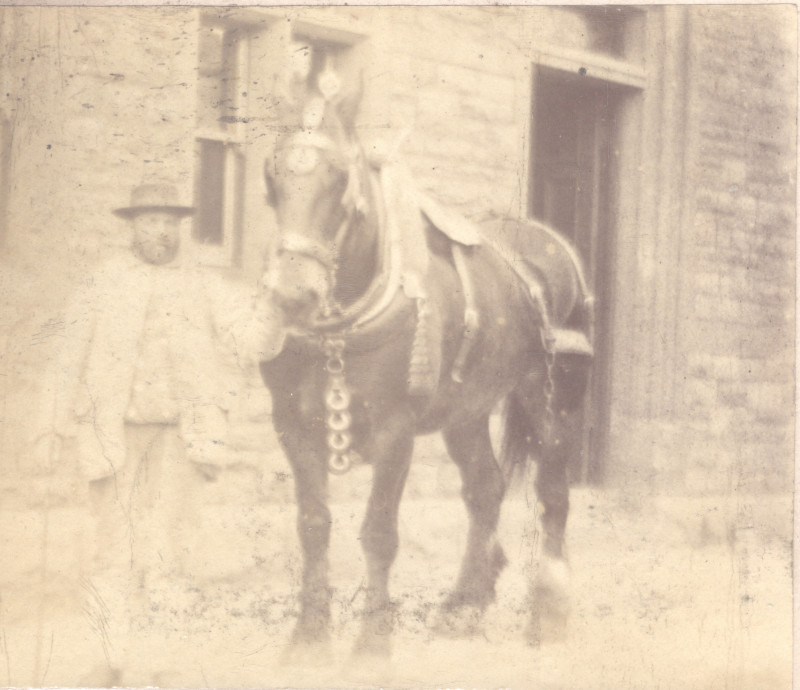
Boat Building
This shows what appears to be a new vessel being built on a slipway. It could be in Bristol, or perhaps somewhere on the Severn or further afield. Butlers made great use of water transport, indeed both the works at Crews Hole and Gloucester were located alongside rivers for this purpose. Butlers had several barges to use in the City Docks, towed by steam tugs (see below). This barge appears to have a riveted iron or steel hull.
Butlers book of 1953 refers to two steel barges, named "Darby" and "Jolly" being built by R Cox & Sons of Appledore in 1903 - perhaps that is the location?

The Steam Tug
In Butlers' book there is a description of the demise of the Company Steam Tug "Ellie".
"This boat existed for some years but came to an eventful end by being wrecked on the 'Denny', an island in the River Severn at the mouth of the River Avon. It recalls what might have been a tragic party. The three brothers - William, Joseph and Thomas, together with some friends, set out one week-end to land on the Denny. The "Ellie" was anchored and the landing took place in a rowing boat. The tide receded very fast and the "Ellie" dried out and fell over on her side. With the rising tide, she filled and foundered and it is interesting to relate that so strong was the tide in the Severn that the hull of the ship was seen at low tide somewhere near Steep Holme, whilst the boiler was observed near Sharpness, a distance between the two points of some 40 miles."
The Ellie was replaced by "Irene" and there is a photo of Irene in the book Butlers produced in 1953.
The two photographs below show a steam tug, that is certainly not "Irene", so could this be the "Ellie"?
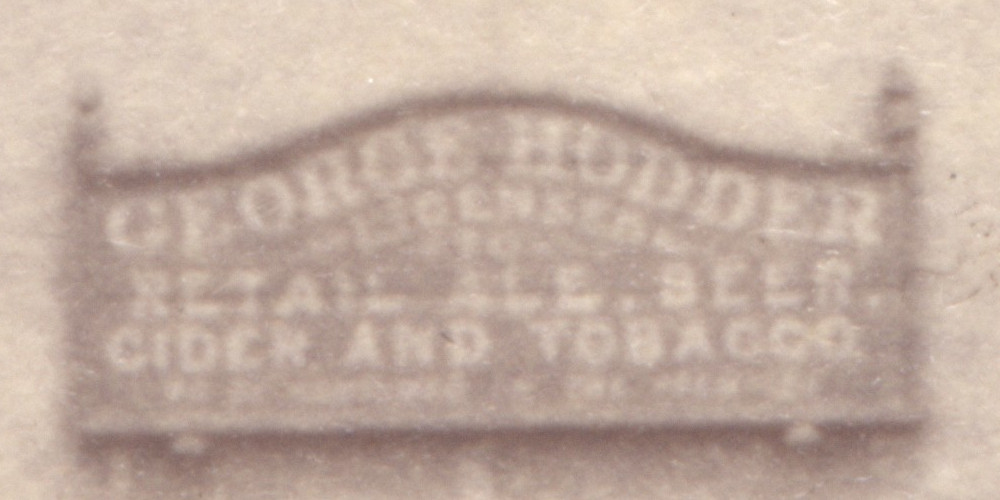 The name on the pub sign is George Hodder (see close up).
The name on the pub sign is George Hodder (see close up).
Thanks to Friends of Troopers Hill member, Siobhan, we have identified this as the (now closed) Berkeley Hunt Inn in Purton, adjacent to one of the canal bridges on the Gloucester & Sharpness Canal.
As George Hodder is listed as the landlord of the pub in 1891, this helps confirm the date of the photos.
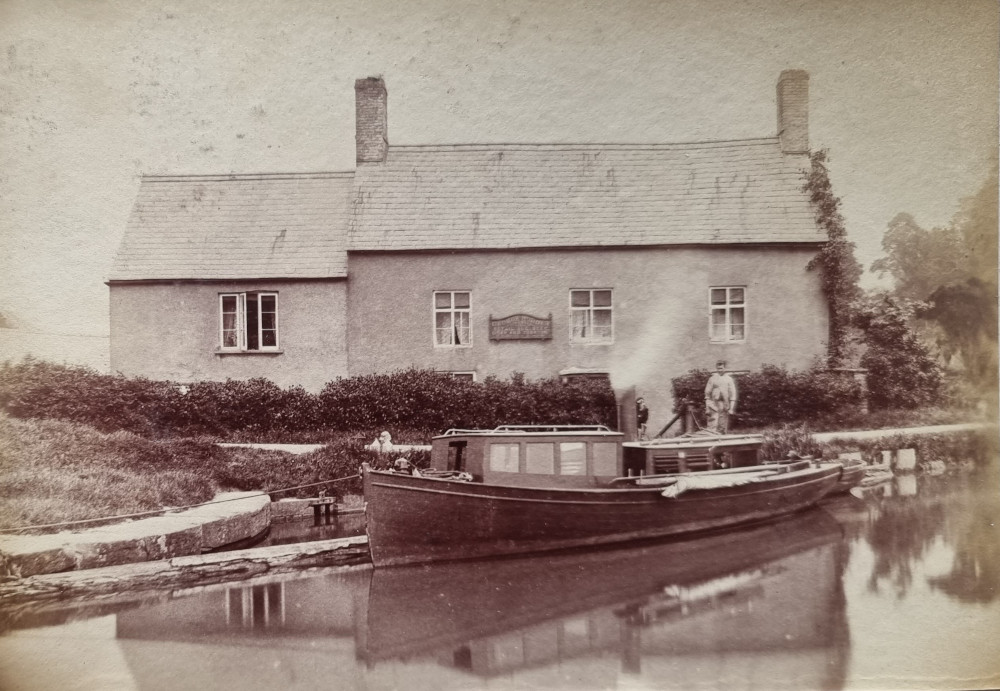

River Severn
There are a series of photos taken on the River Severn, perhaps taken on a trip up river on one of Butlers' boats. It could have been a trip on Ellie when the above two photos were also taken.
The photos are shown here in order as you travel up the river from Gloucester, the locations are:
Haw Bridge (and the pub that still stands); Upper Lode Lock at Tewkesbury; Mythe Bridge at Tewkesbury.
Two views of Upton-on-Severn - note the church, of which the tower was a part, was then still standing. The bridge shown here has been demolished, with the current bridge being further upstream.
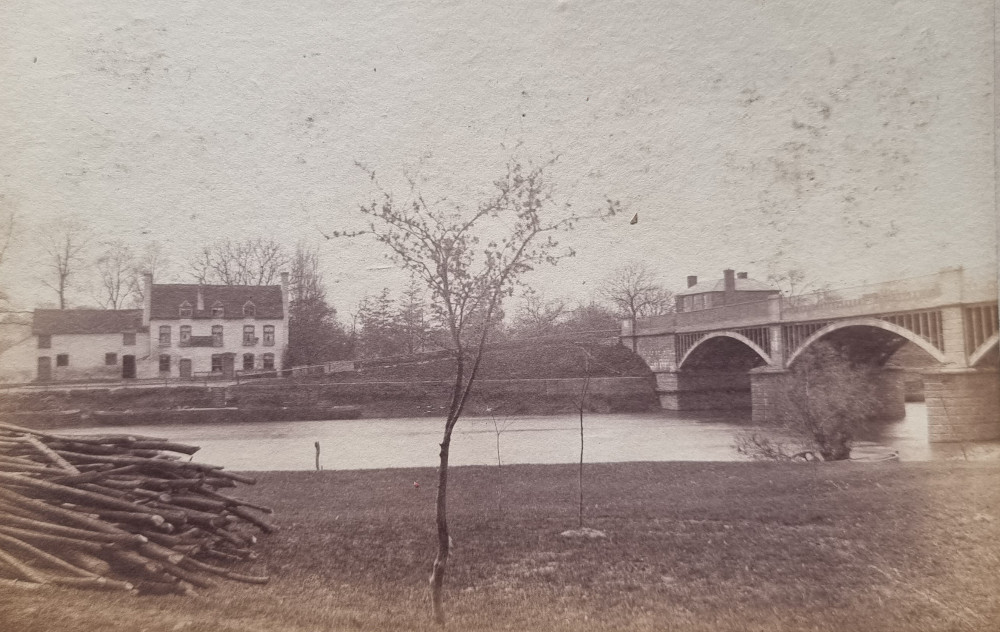
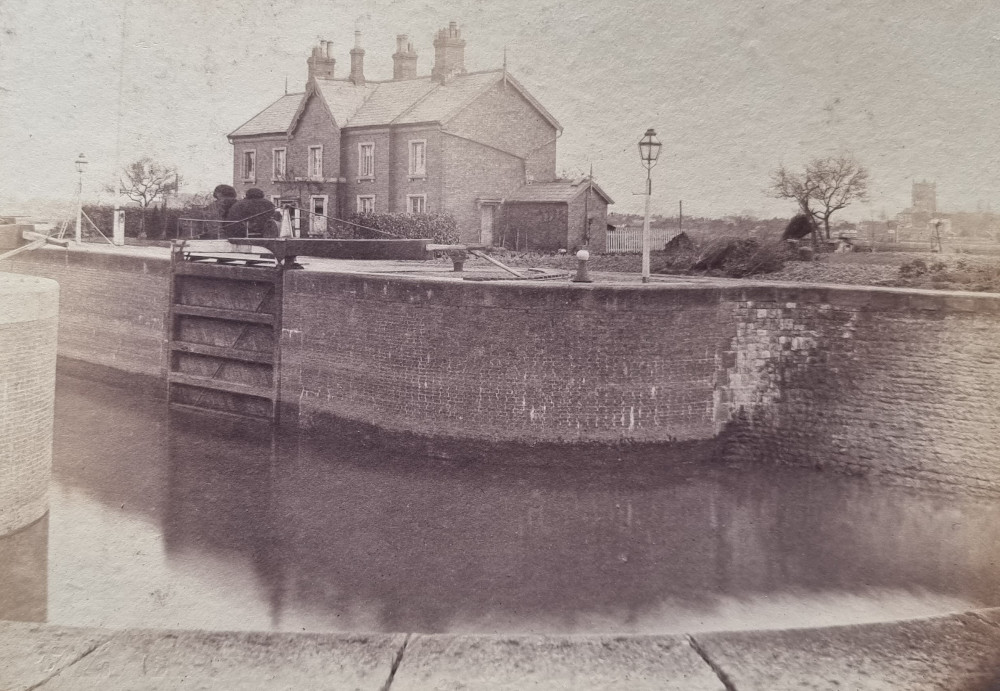
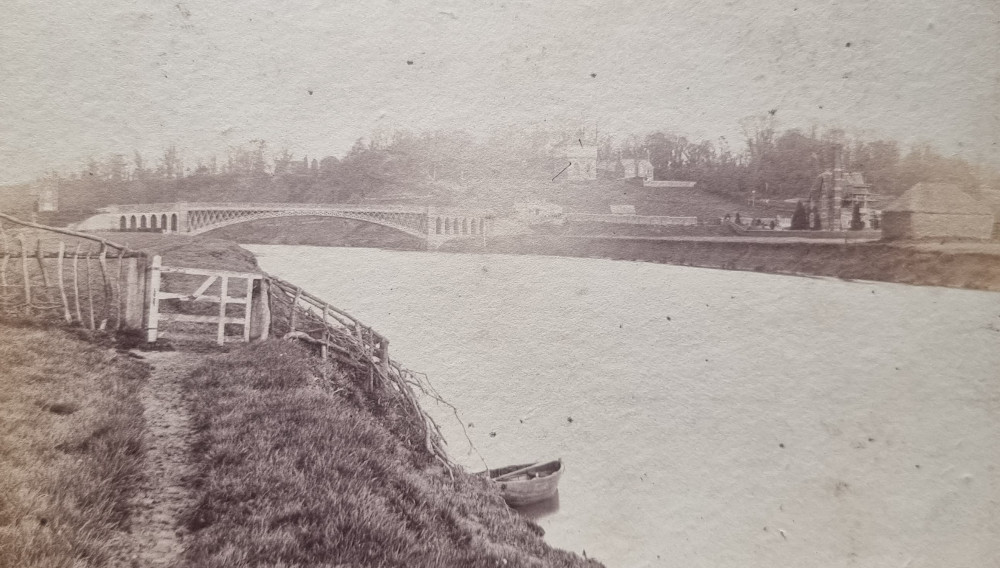
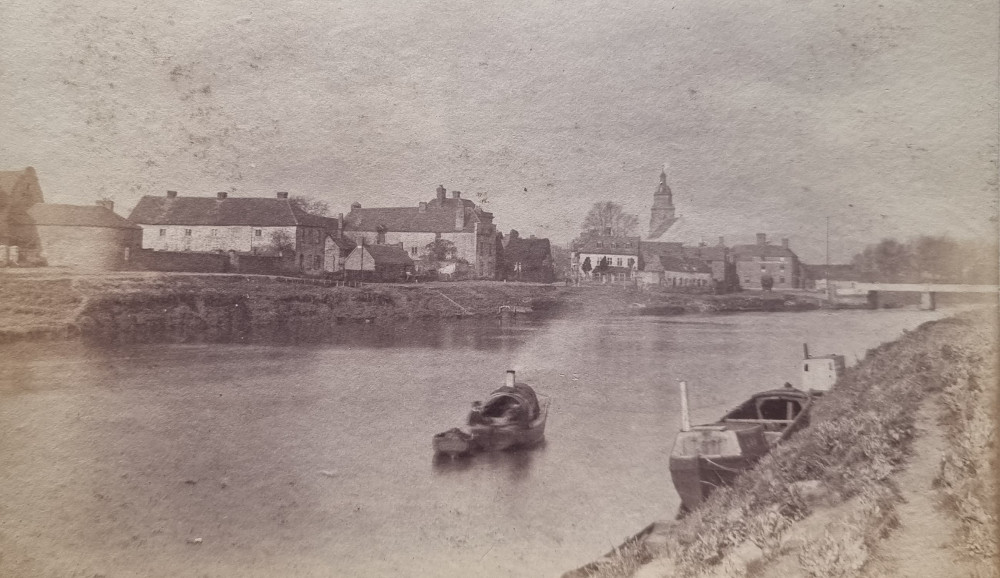
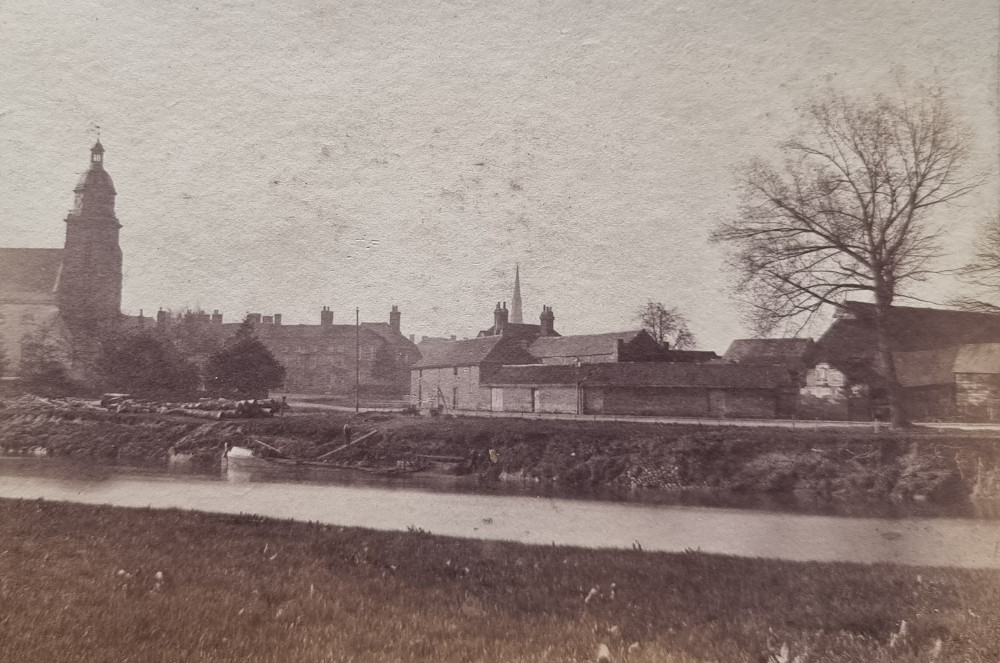
Bristol Zoo
Amongst the more 'touristy' photos are these two showing the lake at Bristol Zoo. The ornate sculpture in the lake confirms the location.
Amongst the water fowl is what appears to be a black swan.
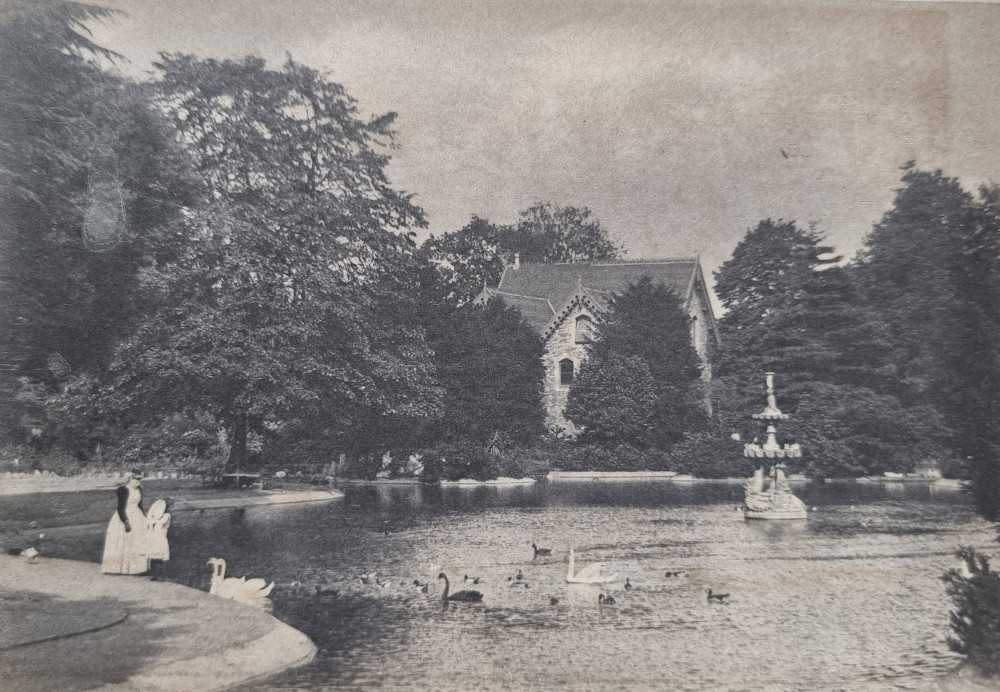
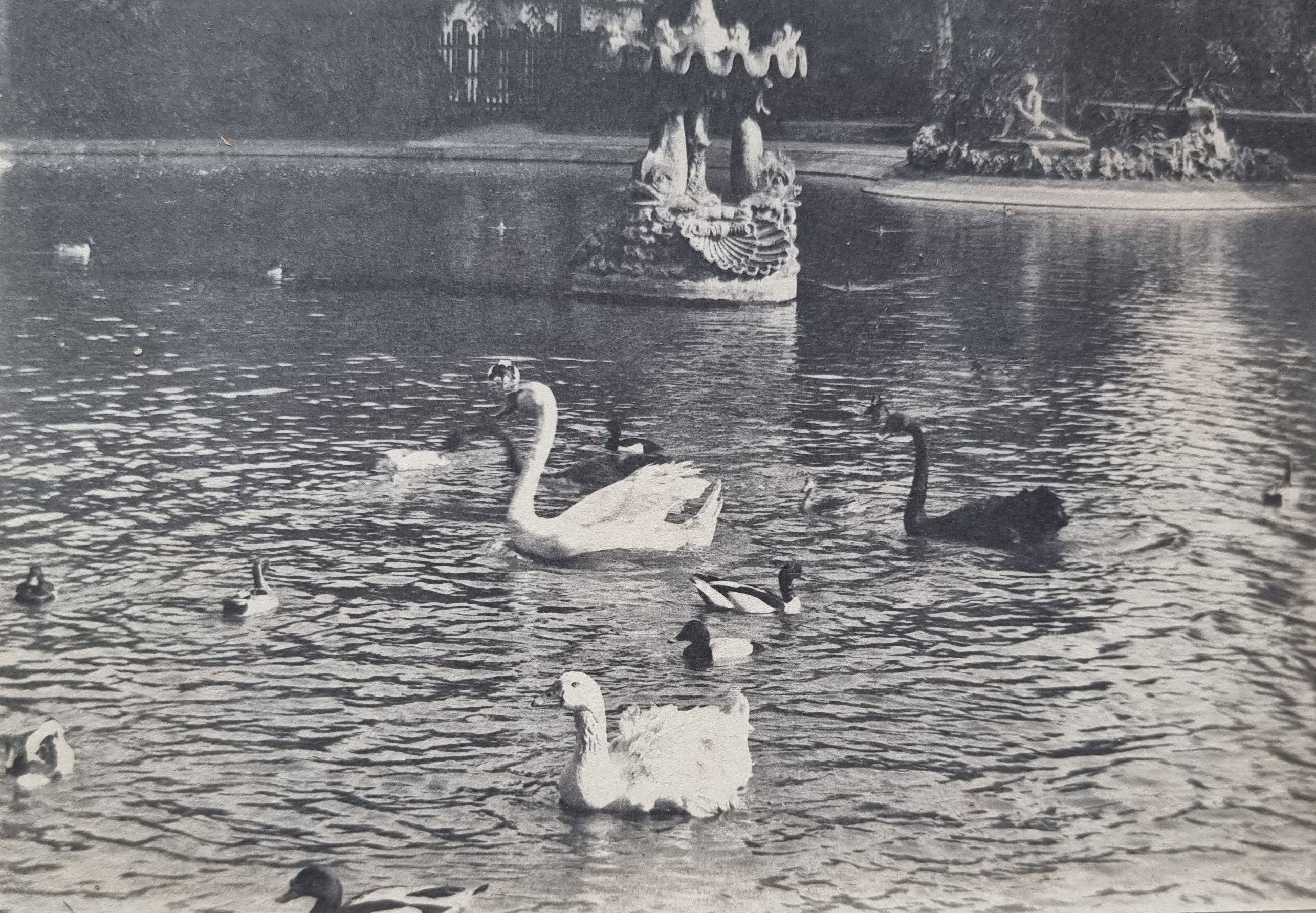



 Both photographs show a barge loaded with barrels and a narrowboat. The narrowboat (which would have had a large tank for tar under its decks) can be seen to have been owned by William Butler & Co. (see close up). Butlers made extensive use of water transport for collecting crude tar from the Gas Works where it was produced as a by-product of the process of producing town gas from coal. Finished products were also distributed by water transport, usually in barrels.
Both photographs show a barge loaded with barrels and a narrowboat. The narrowboat (which would have had a large tank for tar under its decks) can be seen to have been owned by William Butler & Co. (see close up). Butlers made extensive use of water transport for collecting crude tar from the Gas Works where it was produced as a by-product of the process of producing town gas from coal. Finished products were also distributed by water transport, usually in barrels.












 The name on the pub sign is George Hodder (see close up).
The name on the pub sign is George Hodder (see close up).








